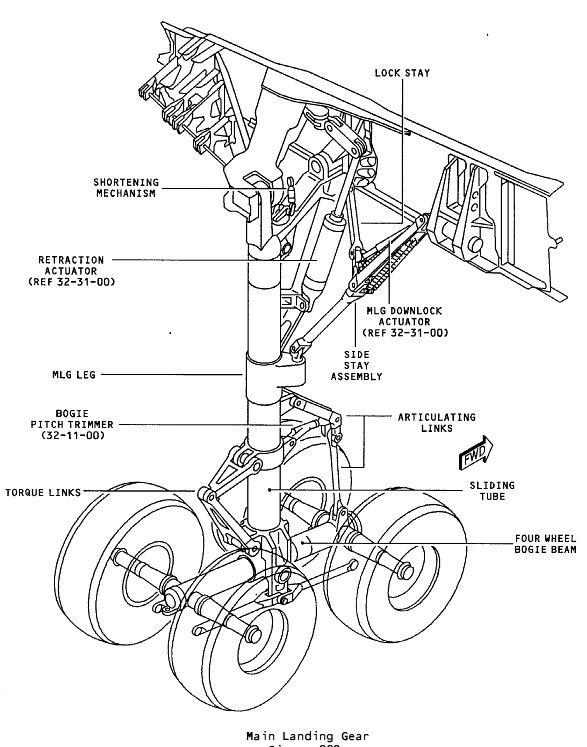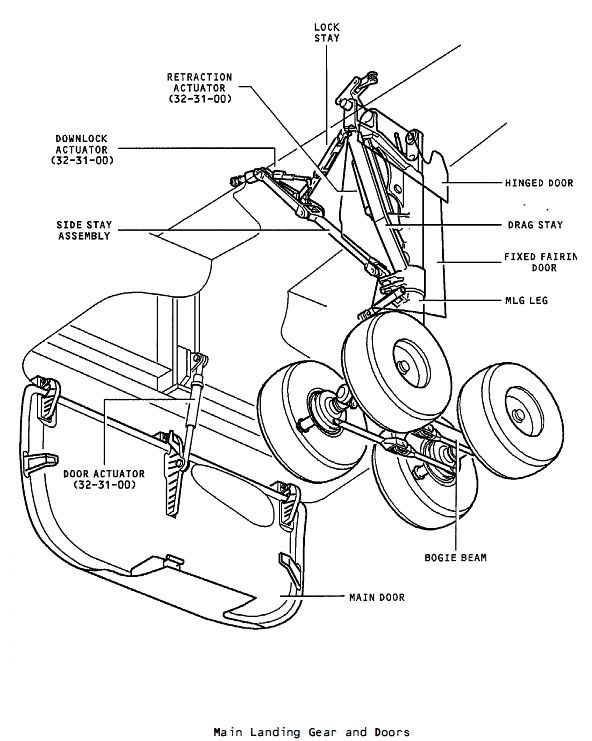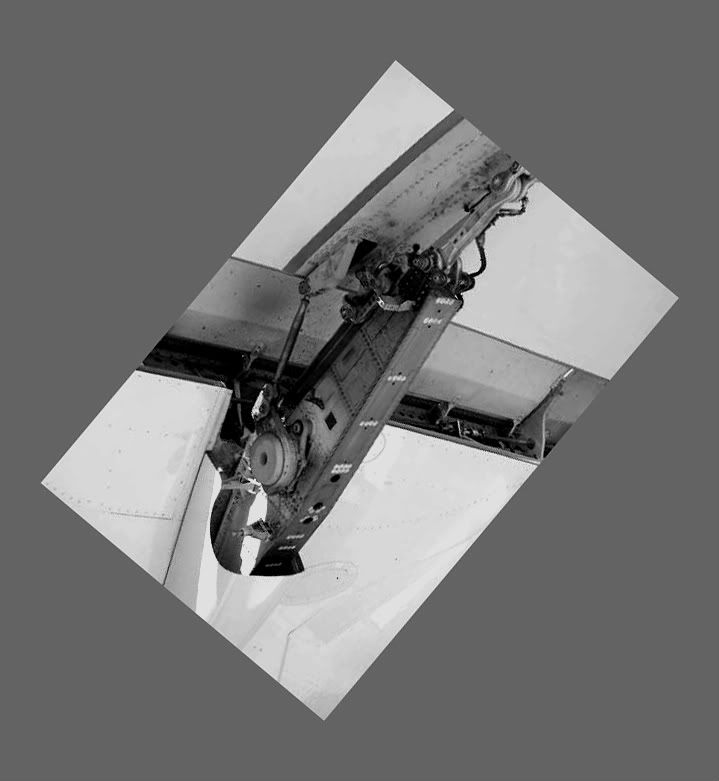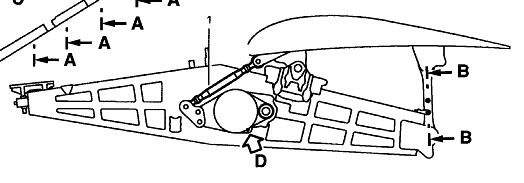AF 447 Search to resume
Hi SaturnV. There are plenty of questions here, and we still do not have enough information to answer them.
I strongly believe that the debris found was always floating somewhere. It was simply not found. Either they overflew it and missed it, or they were searching the wrong area.
Debris can be very easy to miss in rough seas - it is difficult to see amongst all the white water. If you look at the image of the divers recovering the VS however, it is clear that the sea was very calm (at least at that time). So that does not appear to be the explanation.
There was certainly overcast, and this would have hampered the search.
With a lot of ocean to search, they probably flew at a relatively high level ie they decided to maximise the area covered at the expense of resolution. They searched an area of approximately 120 x 60 miles over the first few days. This is a very substantial search given it is right in the middle of the ocean, so they were clearly trying to cover plenty of area. This makes sense. They didn't know what had happened or where to look, but would almost certainly have still been hoping for survivors. Therefore they likely conducted an extensive low resolution search (looking for life rafts etc and knowing they needed to be found quickly). So I expect they flew high with fairly wide tracks so as to increase the "searched area", but also increase the risk of missing something within that area (especially with cloud).
I guess they were just unlucky. The total amount of debris recovered is not a lot, and is easy to miss from the air when you don't know where to look.
Does anyone have any idea where the location supposedly is. They have hinted close to LKP, but I wonder if this is disinformation.
I strongly believe that the debris found was always floating somewhere. It was simply not found. Either they overflew it and missed it, or they were searching the wrong area.
Debris can be very easy to miss in rough seas - it is difficult to see amongst all the white water. If you look at the image of the divers recovering the VS however, it is clear that the sea was very calm (at least at that time). So that does not appear to be the explanation.
There was certainly overcast, and this would have hampered the search.
With a lot of ocean to search, they probably flew at a relatively high level ie they decided to maximise the area covered at the expense of resolution. They searched an area of approximately 120 x 60 miles over the first few days. This is a very substantial search given it is right in the middle of the ocean, so they were clearly trying to cover plenty of area. This makes sense. They didn't know what had happened or where to look, but would almost certainly have still been hoping for survivors. Therefore they likely conducted an extensive low resolution search (looking for life rafts etc and knowing they needed to be found quickly). So I expect they flew high with fairly wide tracks so as to increase the "searched area", but also increase the risk of missing something within that area (especially with cloud).
I guess they were just unlucky. The total amount of debris recovered is not a lot, and is easy to miss from the air when you don't know where to look.
Does anyone have any idea where the location supposedly is. They have hinted close to LKP, but I wonder if this is disinformation.
R/H Main L/G down before impact, or after?
Hi HN39 (and PFR),
Don't have a picture, I'm afraid. You will recall that PJ2, you and I had a short discussion the day before yesterday, ending here:
http://www.pprune.org/tech-log/39510...ml#post6350925
Earlier, not being a structures man, I tried clumsily to explain that the MLG is mounted on the rear spar, near the apex of a triangle formed at the point of intersection of a diagonal spar with the rear spar. The triangle formed (sometimes called the Bermuda Triangle) has as its base, I think, the keel of the centre-section fuselage. The MLG assembly, as you said, retracts inboard so that the tyres nearly touch the keel as they rest in the main-gear bay.
Again, I stand to be corrected by an airframes expert, but the triangles surrounding each of the main-gear bays must be about the most robust structures of the airframe. They may have survived the impact, protecting the main gear legs if they were retracted.
The photo of the R/H MLG on page 5 of the "Présentation BEA":
http://www.bea.aero/fr/enquetes/vol....4avril2011.pdf
does not show anything inboard of the extended leg, but that does not necessarily mean that the visible part of the rear spar has broken away from the "Bermuda Triangle": we will find out later.
If the MLG was in the retracted position on impact, the disturbance to the MLG up-lock and the ripping-off of the lightweight main doors could allow the leg to drop suddenly or gradually into the position shown; perhaps like a gravity-extension procedure.
Chris
Don't have a picture, I'm afraid. You will recall that PJ2, you and I had a short discussion the day before yesterday, ending here:
http://www.pprune.org/tech-log/39510...ml#post6350925
Earlier, not being a structures man, I tried clumsily to explain that the MLG is mounted on the rear spar, near the apex of a triangle formed at the point of intersection of a diagonal spar with the rear spar. The triangle formed (sometimes called the Bermuda Triangle) has as its base, I think, the keel of the centre-section fuselage. The MLG assembly, as you said, retracts inboard so that the tyres nearly touch the keel as they rest in the main-gear bay.
Again, I stand to be corrected by an airframes expert, but the triangles surrounding each of the main-gear bays must be about the most robust structures of the airframe. They may have survived the impact, protecting the main gear legs if they were retracted.
The photo of the R/H MLG on page 5 of the "Présentation BEA":
http://www.bea.aero/fr/enquetes/vol....4avril2011.pdf
does not show anything inboard of the extended leg, but that does not necessarily mean that the visible part of the rear spar has broken away from the "Bermuda Triangle": we will find out later.
If the MLG was in the retracted position on impact, the disturbance to the MLG up-lock and the ripping-off of the lightweight main doors could allow the leg to drop suddenly or gradually into the position shown; perhaps like a gravity-extension procedure.
Chris
Last edited by Chris Scott; 6th Apr 2011 at 12:33. Reason: Minor clarifications
Join Date: Jun 2009
Location: Paris
Posts: 691
Likes: 0
Received 0 Likes
on
0 Posts
Originally Posted by sensor_validation
Given the approx location of the debris, is the fact that the 02:10:30 (assume this is exact time of position acquisition, transmission 4s later) location was "slighty west 3NM" of track INTOL - TASIL now more significant.
Yes was discussed at length previously, and can only be answered for sure by the black boxes - but was the deviation deliberate or indicative of an earlier upset?
Yes was discussed at length previously, and can only be answered for sure by the black boxes - but was the deviation deliberate or indicative of an earlier upset?
People should use the term "upset" more carefully. It means a loss of control when an aircraft flight attitude become dangerous (in pitch, roll...), something that can lead to a crash if not recovered immediately, and the crash may happen in a very short time following an upset (most of the time, 1 min or less). I don't think there is any precedence of an "upset" lasting 5 minutes (or more) before impact.
A deliberate change of the flight path (deviation, altitude, etc.) doesn't automatically qualify for an "upset" if the aircraft has not reached an "abnormal attitude". In this case, the attitude at impact doesn't tell much about an early "upset"... so far.
Originally Posted by Shadoko
- if an engine flameout happened, was an ACARS to be transmitted?
- is a spinning "posture" making a stop to the satellite transmission (so, no more ACARS)?
- in the event of a vertical stabilizer rupture, is the cabin depressurization mandatory (and followed by an ACARS)?
- is a spinning "posture" making a stop to the satellite transmission (so, no more ACARS)?
- in the event of a vertical stabilizer rupture, is the cabin depressurization mandatory (and followed by an ACARS)?
ACARS are transmitted when the toilets are clogged while there is plenty of systems linked to the Vertical Stabilizer (hydraulics, etc.). So yes, the maintenance computer would certainly notice the lack of it. The cabin pressure would be compromized or not, it depends of the airframe damages suffered in this case.
Last edited by takata; 6th Apr 2011 at 13:10.
Join Date: Jul 2009
Location: France - mostly
Age: 84
Posts: 1,682
Likes: 0
Received 0 Likes
on
0 Posts
Originally Posted by CONFiture
If 2 ADRs tell the same lie, the flight law will not degrade to ALT but remain to NORMAL.
In twelve out of thirteen cases of erroneous airspeed discussed in BEA Interim Report No.2, the airplane switched to alternate law. In one case, this switch was temporary. Nine cases of triggering of the stall warning were observed.
Apparently "low speed stability" was never activated in these events, and I would like to understand in what conditions it would be.
Regards,
HN39
Join Date: Jul 2009
Location: SUSSEX UK
Age: 76
Posts: 57
Likes: 0
Received 0 Likes
on
0 Posts
A330 Landing Gear
These might aid visualisation:
Main Landing Gear, Airbus A330/A340 | Flickr - Photo Sharing!
3D max airbus a330 landing
Main Landing Gear, Airbus A330/A340 | Flickr - Photo Sharing!
3D max airbus a330 landing
Join Date: Apr 2009
Location: Melbourne, Australia
Age: 40
Posts: 73
Likes: 0
Received 0 Likes
on
0 Posts
Originally Posted by takata
Sorry, but it is not what Jean-Paul Troadec said. This is a bad translation of "All the wreckage brought to the surface will be sent to France", which is quite different: they will only brought to the surface what part is needed in order to fully understand the crash; they won't need the full aircraft if the recorders are recovered and are telling enough about the cause.
Hopefully that bit of oarnge will not be too heavily silted or otherwise covered if it is lying free.
Then a good photo interpreter will have a fighting chance of picking it out.
Then a good photo interpreter will have a fighting chance of picking it out.
I've suggested before that the FDRs should deploy material that can aid its recovery underwater or if buried in mud. The box could have an outer frangible shell containing very long ribbons of metallic material, or perhaps slow (50 day) release dye.
We seem to be able to track radiation to one part per trillion, perhaps there is a harmless isotope we can employ?
Mickjoebill
Dog Tired
Chris, HN39;
I think both HN39 and you are reading the photograph of the right gear/wing/flap track correctly. That is indeed a flap track on the right side of the photograph, (confirmed). The diagrams below may help sort out the original question, Chris.
I am aware that another poster had considered the vertical water impact on the gear doors may have molded them to the high points of the retracted gear and, given the surface area of the MLG itself, (let alone the doors), presented to the water, that the gear would not have been forced to the down-position. I think that is a reasonable expectation, for the moment of impact.
One thing is for sure in this theory regarding why the gear is resting in the extended position: Against impact forces alone, the uplocks would not have held the MLG up, nor would have the MLG doors. They would have broken at impact.
It remains to be understood whether the impact with the surface of the water would have kept the gear up, at least until the wreckage began settling or whether the gear broke through such forces and extended at the moment of impact. I don't think it matters.
Alternatively, the crew threw the gear out as a last-minute attempt to regain control and the recorders will tell us that.
What is interesting is, it's extended and there are two reasonable notions why - impact forces or crew action. We will learn soon enough I think.
PJ2


Originally Posted by Chris Scott 6th Apr 2011 04:52
If the MLG was in the retracted position on impact, the disturbance to the MLG up-lock and the ripping-off of the lightweight main doors could allow the leg to drop suddenly or gradually into the position shown; perhaps like a gravity-extension procedure.
I am aware that another poster had considered the vertical water impact on the gear doors may have molded them to the high points of the retracted gear and, given the surface area of the MLG itself, (let alone the doors), presented to the water, that the gear would not have been forced to the down-position. I think that is a reasonable expectation, for the moment of impact.
One thing is for sure in this theory regarding why the gear is resting in the extended position: Against impact forces alone, the uplocks would not have held the MLG up, nor would have the MLG doors. They would have broken at impact.
It remains to be understood whether the impact with the surface of the water would have kept the gear up, at least until the wreckage began settling or whether the gear broke through such forces and extended at the moment of impact. I don't think it matters.
Alternatively, the crew threw the gear out as a last-minute attempt to regain control and the recorders will tell us that.
What is interesting is, it's extended and there are two reasonable notions why - impact forces or crew action. We will learn soon enough I think.
PJ2


Join Date: Jun 2009
Location: Paris
Posts: 691
Likes: 0
Received 0 Likes
on
0 Posts
Originally Posted by Chris Scott
takata,
If they had maintained cruise altitude during that 4 -5 minute series of failures, and then had a simultaneous double-engine (and therefore double-generator) failure, they could indeed have glided for about 12 -15 minutes. Seems a bit odd that they should end up ditching without pre-warning cabin crew and passengers, and find themselves within about 15nm of where they were when their problems began.
If they had maintained cruise altitude during that 4 -5 minute series of failures, and then had a simultaneous double-engine (and therefore double-generator) failure, they could indeed have glided for about 12 -15 minutes. Seems a bit odd that they should end up ditching without pre-warning cabin crew and passengers, and find themselves within about 15nm of where they were when their problems began.
a) How long did they maintain cruise altitude?
It is still unknow without the recorders. It seems that they may have lost a lot of altitude at the end of the sequence (02.14) when the pressurization valve opened. An emergency descent up to 8,000 ft/mn is plausible or it may be due to a previous but recovered upset.
b) a gently stalled aircraft from cruise level would take about 10-15 minutes to reach sea level, not 5 minutes, and it would certainly cover a fair distance from LKP if not circling around.
c) At impact time, this aircraft seems to be in controled fligth attitude... if powered. This may be due to a failed attempt to relight its engines without having enough altitude in order to come out of the dive to build up speed: a CFIT at the dive bottom rather than an upset from cruise lasting up to this point.
d) an attempt to ditch seems very unlikely.
Last edited by takata; 6th Apr 2011 at 15:48.
For some more consideration in water impact on the landing gear door, take a look into the TWA800 photos. I seem to recall that there was quite a bit of discussion about one of the gear doors being mangled enough (later concluded from water impact) to feed the conspiracy folks
If the MLG was retracted at impact, I woulod suggest the wing spar holding the gear leg swivel broke away from the structure fuselage taking the gear with it. Perhaps the wing could have pivoted up at impact and once headed down the gear swung to the down position. This is getting complicated.
Occam's razor leans to the crew dropping the gear in an attempt to regain control.
Occam's razor leans to the crew dropping the gear in an attempt to regain control.
HN39;
Things to note, (as per BEA conclusion that the flaps were retracted):
The flap actuator/drive has extended the flaps in this photograph from the BEA Report No.2, (rotated and desaturated to make comparison easier). The lower photograph shows the same structure, (cropped from the larger one with the gear and rear-spar showing) and not only confirms that this is the right wing but shows the flap actuator in the "up" position, as per the drawing:



Perhaps we should look at the flap track too.
The flap actuator/drive has extended the flaps in this photograph from the BEA Report No.2, (rotated and desaturated to make comparison easier). The lower photograph shows the same structure, (cropped from the larger one with the gear and rear-spar showing) and not only confirms that this is the right wing but shows the flap actuator in the "up" position, as per the drawing:



Join Date: Jun 2009
Location: Paris
Posts: 691
Likes: 0
Received 0 Likes
on
0 Posts
Originally Posted by RatherBeFlying
If the MLG was retracted at impact, I woulod suggest the wing spar holding the gear leg swivel broke away from the structure fuselage taking the gear with it. Perhaps the wing could have pivoted up at impact and once headed down the gear swung to the down position. This is getting complicated.
Occam's razor leans to the crew dropping the gear in an attempt to regain control.
Occam's razor leans to the crew dropping the gear in an attempt to regain control.
In fact, without a modelization of the impact at sea, including a model showing the sinking of the remaining MLG parts down to 4,000 meters deep, with all surfaces implied, weight, buyancy and pressure effects, it would be very difficult to refer to any simple "law".
Maybe the MLG extended during its fall to the sea bed after being released by impact forces. So far, I'm not sure the MLG would be so preserved (especially the tires) if it had sustained the full initial shock without being stored.
Join Date: Jun 2009
Location: NNW of Antipodes
Age: 81
Posts: 1,330
Received 0 Likes
on
0 Posts
Originally posted by takata ...
Maybe the MLG extended during its fall to the sea bed after being released by impact forces. So far, I'm not sure the MLG would be so preserved (especially the tires) if it had sustained the full initial shock without being stored.
Maybe the MLG extended during its fall to the sea bed after being released by impact forces. So far, I'm not sure the MLG would be so preserved (especially the tires) if it had sustained the full initial shock without being stored.
Two days ago, by PM to another poster on the same matter, I answered as follows:-
I think we need to consider the relative acceleration (deceleration) forces acting on various areas at impact, and what intact mass was behind them. By this, I mean we should consider the main spar (including the center tank) and then look at the mass and relative size of the MLG. On a mass/area basis the MLG will decelerate at a lesser rate than the main spar/wing area, and I think that is the basis for it being found in what could be considered the locked down position.
The DFDR will confirm this one way or the other.
Join Date: Jul 2009
Location: France - mostly
Age: 84
Posts: 1,682
Likes: 0
Received 0 Likes
on
0 Posts
PJ2;
I thought that in the Report pictures we are looking towards the trailing edge, i.e. wing on the left, flap on the right. (See pylon trailing edge at the far left of second picture). In the sea-bottom picture we are looking towards the leading edge, and I was searching at the forward end of the heavy track or beam, for the arm that is flush with the wing under surface in the first report picture (flap extended), and perpendicular to it in the retracted position shown in the second report picture. The drawing you show upsets my sense of orientation. Have I got it all wrong?
Regards,
HN39
I thought that in the Report pictures we are looking towards the trailing edge, i.e. wing on the left, flap on the right. (See pylon trailing edge at the far left of second picture). In the sea-bottom picture we are looking towards the leading edge, and I was searching at the forward end of the heavy track or beam, for the arm that is flush with the wing under surface in the first report picture (flap extended), and perpendicular to it in the retracted position shown in the second report picture. The drawing you show upsets my sense of orientation. Have I got it all wrong?
Regards,
HN39




